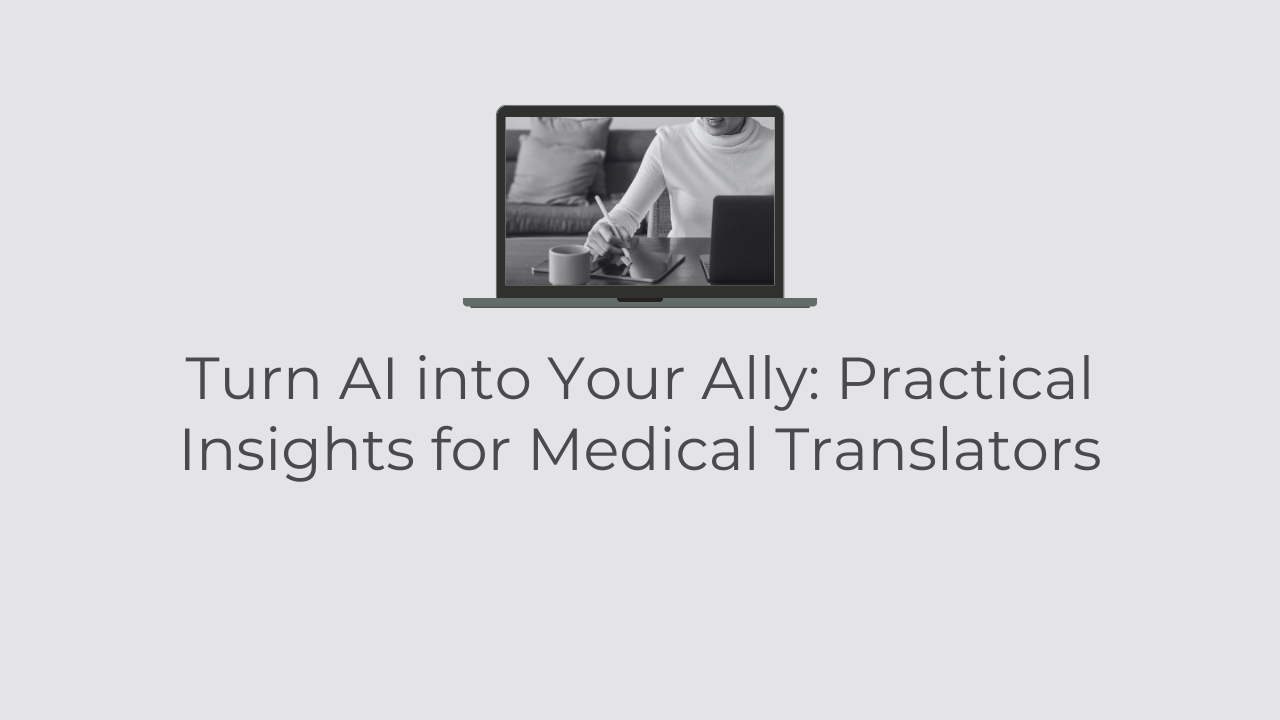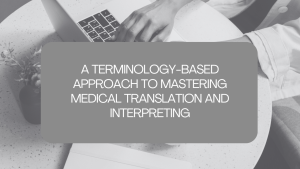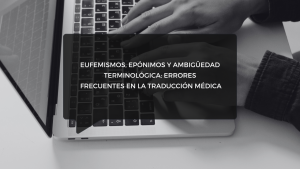Artificial intelligence is fundamentally reshaping the language industry, presenting both unprecedented challenges and remarkable opportunities for medical translators. Rather than viewing these technological advances as existential threats, savvy professionals are discovering how AI can serve as a powerful ally—one that amplifies human expertise while preserving the critical judgment that only experienced translators can provide.
The stakes in medical translation have never been higher. When translating clinical trial protocols, patient consent forms, or pharmaceutical documentation, linguistic precision directly impacts patient safety, research validity, and healthcare outcomes. In this high-stakes environment, the question isn’t whether AI will transform medical translation, but how professionals can harness these tools strategically to deliver superior results while maintaining ethical integrity.
Demystifying the AI Landscape
To effectively integrate AI into medical translation workflows, professionals must first understand the distinct technologies often conflated under the umbrella term “artificial intelligence.” This technological literacy forms the foundation for making informed decisions about which tools serve specific purposes.
Machine Translation (MT) represents the most familiar category—automated systems that convert text between languages. While early MT relied on rigid rules or statistical patterns, neural MT has dramatically improved contextual understanding and fluency. However, MT addresses only one dimension of the translation challenge, focusing primarily on linguistic conversion without deeper content analysis.
Large Language Models (LLMs) operate at a more sophisticated level, trained on massive multilingual datasets to generate coherent, context-aware responses. These systems transcend simple translation by summarizing complex passages, expanding acronyms, explaining technical concepts, and even identifying potential ambiguities. Popular platforms like ChatGPT, Claude, Google Gemini, and Microsoft Copilot each offer unique strengths, from OpenAI’s extensive custom bot ecosystem to Anthropic’s emphasis on safety and ethical alignment.
Generative AI encompasses the broader category of systems that create original content—text, images, or code—by recognizing and replicating patterns from training data. LLMs represent a major subset within this field, distinguished by their ability to process and generate human-like language across multiple domains and contexts.
Understanding these distinctions enables medical translators to select appropriate tools for specific tasks. When evaluating AI platforms, three critical factors demand consideration: domain specialization (exposure to medical literature), document handling capabilities (processing PDFs, tables, structured formats), and data privacy protocols (storage, usage, and deletion policies).
Strategic Workflow Integration
Rather than replacing human judgment, AI excels when integrated thoughtfully into existing translation workflows. This collaborative approach leverages AI’s computational strengths while preserving the translator’s domain expertise, cultural sensitivity, and ethical oversight.
Pre-Translation Intelligence
AI can dramatically accelerate preparation phases by extracting medical terminology from source texts, building comprehensive glossaries that capture domain-specific language patterns. Advanced prompting techniques enable sophisticated analysis for example: “Extract all medical terms and technical vocabulary from the following text. List them with brief definitions and provide non-technical equivalents for each term.”
Acronym expansion represents another valuable pre-translation application. Medical texts bristle with abbreviations that can carry multiple meanings depending on specialty and context. AI models can identify these abbreviations and suggest expansions based on surrounding content, while alerting translators to potentially ambiguous cases where human judgment becomes essential.
Source analysis capabilities allow AI to flag cultural references, idiomatic expressions, or terminology that may require adaptation for international audiences. This preliminary scan helps translators anticipate challenges and allocate time appropriately across different document sections.
Translation Support
During active translation, AI functions as an intelligent reference assistant. It can summarize particularly dense technical passages, helping translators grasp complex concepts before crafting appropriate target-language equivalents. When encountering unfamiliar procedures, rare pharmaceutical compounds, or anatomical variants, AI can provide contextual definitions and usage examples drawn from its training data.
Cross-referencing capabilities enable terminological verification, while alternative phrasing suggestions help translators navigate particularly challenging passages. However, these AI-generated options should always be evaluated through the lens of professional expertise, as seemingly plausible suggestions may lack the nuance or precision required for medical contexts.
Post-Translation Quality Assurance
AI’s pattern recognition capabilities shine in quality assurance applications. Consistency checks can identify terminological variations across lengthy documents, ensuring uniform language throughout complex clinical protocols or regulatory submissions. Readability assessments prove particularly valuable for patient-facing materials, where clarity directly impacts comprehension and treatment adherence.
Locale verification represents another strength, as AI can flag numerical formats, measurement units, date conventions, and punctuation patterns that require adjustment for target markets. While these checks can be largely automated, human oversight remains essential to ensure appropriateness and compliance with genre-specific standards.
Case Study: Oncology Terminology Management
Consider the challenge of translating a comprehensive oncology clinical trial protocol—a document dense with pharmacological nomenclature, procedural terminology, and regulatory language. Traditional approaches might require extensive manual research, glossary compilation, and cross-referencing across multiple authoritative sources.
An AI-enhanced workflow transforms this process. Upload the protocol to a document-processing AI tool and deploy structured prompts to extract oncology-specific terminology, categorize terms by type (pharmaceuticals, anatomy, procedures, assessments), and provide definitions with contextual examples. The system can flag potentially ambiguous terms and suggest where human expertise becomes crucial.
This AI-generated analysis serves as raw material for human refinement. The translator validates entries against trusted medical databases such as MeSH, MedDRA, or Stedman’s, incorporates findings into existing termbases, and uses the categorized terminology to inform translation strategies. This semi-automated approach significantly reduces research time while improving consistency and accuracy.
Building Specialized Corpora with AI
Corpus development has traditionally required substantial manual effort: identifying relevant source materials, cleaning and formatting data, and using specialized tools to analyze usage patterns. AI now accelerates and simplifies this process, enabling translators to build domain-specific reference collections with unprecedented efficiency.
AI-powered web crawling tools can gather large volumes of content related to specific medical subfields based on predefined parameters. The system can filter irrelevant material, detect duplicate content, and identify sections with high terminological density. Once collected, LLMs can automatically label and categorize terms, suggest domain tags, and map entries to existing termbases.
These AI-enhanced corpora serve multiple functions: reference resources for future projects, quality benchmarks for consistency checking, and training materials for professional development. Since corpus creation involves publicly available content rather than confidential client materials, it provides a low-risk environment for experimenting with AI tools and developing technological competency.
Ethical Imperatives and Professional Responsibility
Medical translation involves confidential patient data, sensitive clinical information, and content that directly impacts human health. These realities demand rigorous ethical standards when incorporating AI tools into professional workflows.
Confidentiality represents the paramount concern. Before inputting any text into AI platforms, translators must anonymize content by removing patient identifiers, institutional names, and other sensitive information. Platform selection should prioritize services with transparent data policies, clear deletion procedures, and preferably local or on-device processing capabilities.
Accuracy and accountability cannot be delegated to AI systems. While these tools can highlight inconsistencies or suggest alternatives, they lack the professional judgment required for final decisions. High-stakes content—dosage instructions, contraindications, surgical procedures, informed consent language—demands human validation by qualified professionals with relevant domain expertise.
Genre-specific ethical considerations further complicate AI integration. Informed consent documents require absolute clarity to uphold patient autonomy. Research articles demand terminological precision to ensure reproducibility. Patient information materials must balance technical accuracy with accessibility for lay audiences. Each genre brings distinct ethical priorities that must guide AI tool selection and application.
The Human-Plus-Machine Paradigm
The most effective approach frames the relationship not as human versus machine, but as human plus machine. In this collaborative model, medical translators retain their role as ethical and linguistic authorities while AI handles data-intensive, repetitive, or exploratory tasks.
This partnership allows professionals to focus on higher-value contributions: capturing subtle nuances, adapting content for specific audiences, building trust through culturally sensitive communication, and making the complex ethical judgments that characterize expert translation practice. AI handles pattern recognition, initial analysis, and preliminary drafting, freeing human experts to concentrate on interpretation, adaptation, and quality refinement.
Successful implementation requires developing AI literacy—understanding tool capabilities, mastering effective prompting techniques, and maintaining critical evaluation skills. As AI technology continues evolving rapidly, ongoing education through webinars, professional communities, and experimental projects becomes essential for staying current and competitive.
Getting Started: A Practical Roadmap
Medical translators new to AI integration should begin with low-risk applications that offer clear benefits without compromising sensitive content. Term extraction, concept explanation, and draft comparison represent ideal starting points that build confidence while developing technical skills.
Mastering prompting techniques becomes increasingly important as these tools proliferate. Clear, goal-driven instructions determine output quality, while critical evaluation ensures AI suggestions align with professional standards. Always verify AI-generated information against trusted domain-specific references, treating these tools as assistants rather than authorities.
Free corpus tools like BootCaT and AntConc provide accessible entry points for exploring language technology. These platforms enable custom corpus creation, terminology extraction, and usage pattern analysis without requiring advanced technical expertise. Building competency with such tools develops valuable insights while maintaining professional control over data-driven resources.
Conclusion: From Anxiety to Strategic Alliance
AI is not replacing medical translators—it is transforming their toolkit. Professionals who develop AI literacy while maintaining rigorous ethical standards will find themselves better equipped to serve clients, patients, and the broader healthcare community. The future belongs to those who approach these technologies with informed skepticism and strategic purpose, leveraging AI’s computational strengths while preserving the human judgment that makes expert translation possible.
The most successful medical translators in this evolving landscape will be those who neither dismiss AI as irrelevant nor embrace it uncritically, but use it skillfully as one component of a comprehensive professional practice. By maintaining focus on quality, ethics, and patient welfare, medical translators can transform technological disruption into competitive advantage while continuing to provide the expert linguistic services that healthcare demands.




